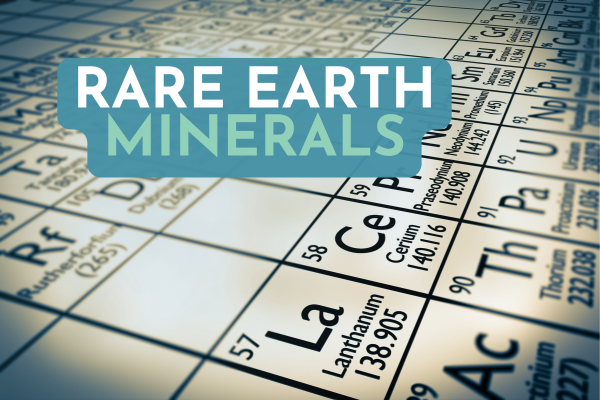July 3, 2025
July 3, 2025

Rare earth elements (REEs) are the invisible workhorses of our modern world. These 17 minerals are essential to the technology powering electric vehicles, smartphones, wind turbines, and even U.S. defense systems.
But despite the name, rare earths aren’t especially rare. The real challenge is how they’re processed—and who controls that supply.
Rare earths are split into two main groups:
According to Jordy Lee of the Payne Institute at the Colorado School of Mines, rare earth elements got their name because nineteenth-century chemists had difficulties separating these elements from each other.
“They also denoted that rare earth's usually stable as earths, which refers to oxides. So, it's just oxygen with another mineral. Most of the earth's crust is made of oxide, so what you end up getting is you have these really difficult to separate earth essentially, so you end up getting rare earth elements, and that's kind of where the name comes from,” Lee said during a podcast on Resources Radio.
Rare earth minerals are indispensable to:
"The U.S. lacks a category of heavy rare earths necessary for magnets to endure hot environments… We’re going to have to work with our allies… Nature’s smarter than we are.”
— Prof. Laura Lewis, Northeastern University (Business Insider)
While rare earths can be found in many parts of the world, processing them is another story.
Most rare earths are chemically bonded with other elements in complex mineral matrices. To isolate each REE, multiple steps of crushing, chemical separation, solvent extraction, and purification are required. These can involve the use of chemicals—like hydrochloric acid and organic solvents—and generate radioactive material if the ore contains thorium or uranium.
“Rare earths aren’t that rare… but they're very well spread out… The processing is the hardest part, not necessarily finding them.”
— Jordy Lee, Payne Institute, Colorado School of Mines (Resources Radio)
According to the Department of Commerce, China currently controls more than 60 percent of global REE production and nearly90 percent of processing capacity, giving it significant leverage in global supply chains.
As Prof. Qingqing Huang of West Virginia University notes:
“We heavily rely on China… Right now we have an urgent need to develop our own supply chain in the country.”
Even though the U.S. has deposits—like at Mountain Pass in California—limited domestic processing capacity means most American rare earths are still refined in China.
“Rare earth elements are critical to the high-tech industry and to national defense, but we heavily rely on China… Right now we have an urgent need to develop our own supply chain in the country.”
— Prof. Qingqing Huang, West Virginia University
In recent years, China has restricted exports of critical rare earths, including magnet materials. While some of those restrictions were recently eased, delays and uncertainty remain, according to Reuters and AP News.
The U.S. is now investing in rare earth mining, processing, and recycling:
Strategic partnerships with Australia, Canada, and other allies are also helping to diversify supply and reduce dependence on China. However, it is critical we develop a domestic supply of rare earths and other minerals to meet U.S. national security and economic needs.
Rare earth minerals power the technologies that define modern life—from clean energy and digital devices to national defense.
As the demand for these materials grows, securing a resilient and sustainable supply chain is essential for U.S. competitiveness, innovation, and security.
Minerals Make It Happen!

July 3, 2025

March 17, 2025